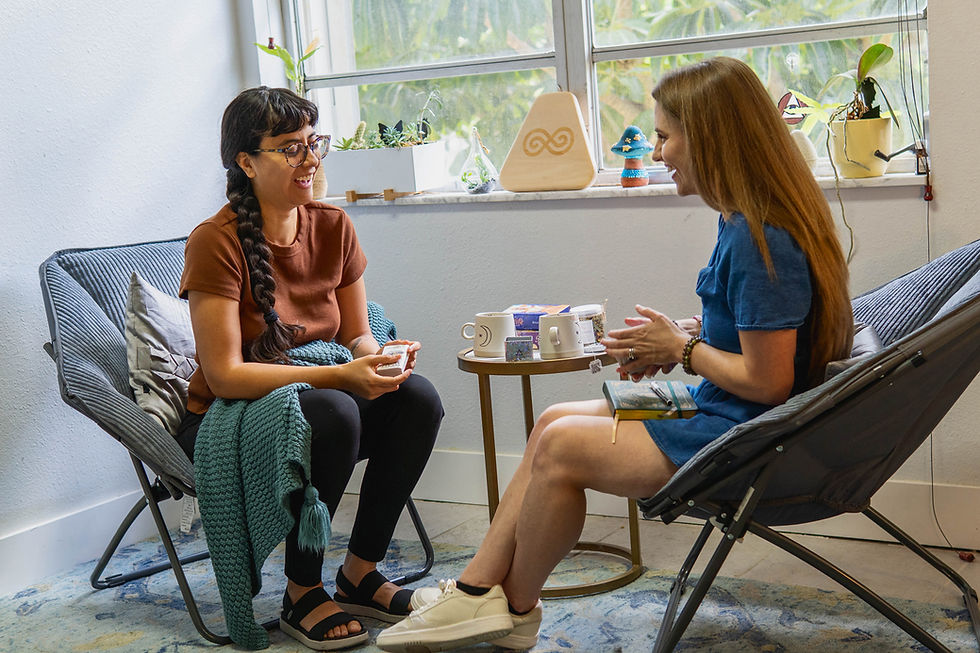Grounding & Resourcing: Creating Safety for Your Nervous System Before Deep Healing
- Edith C. Caballero

- Aug 13
- 3 min read

Healing starts with safety. Before we can process difficult memories or emotions, your nervous system needs to know it’s okay to let its guard down. That’s where grounding and resourcing come in. These are powerful, evidence-based practices that help you feel anchored in the present moment, regulate emotions, and build the inner stability you need for deeper therapeutic work.
What Is Grounding?
Grounding techniques are tools that help you reconnect to the here and now—especially when anxiety, stress, or past trauma pulls you into overwhelm. By engaging your senses, breath, and body awareness, you can shift out of fight-or-flight mode and into a calmer, more balanced state.
Examples of grounding techniques include:
Feeling your feet on the floor and noticing the texture beneath you
Naming 5 things you can see, 4 things you can touch, 3 things you can hear
Using deep, slow breathing to signal safety to your body
What Is Resourcing?
Resourcing is about building an internal toolkit of memories, images, sensations, and beliefs that bring comfort, safety, or strength. These “resources” act like emotional anchors, helping you stay steady when processing difficult emotions or memories.
Examples of resources:
Remembering a place where you feel safe and peaceful
Connecting with the feeling of being supported by someone you trust
Visualizing a protective figure or an inner strength
How I Incorporate Grounding & Resourcing Into Therapy
In my trauma-informed therapy sessions, grounding and resourcing are the first step before we explore deeper work like EMDR, inner child healing, or somatic processing.
Here’s how it works in practice:
Creating a Calm Foundation – We start each session by checking in with your nervous system and noticing your current state.
Building Your Resource Bank – Together, we identify images, sensations, and experiences that make you feel safe, confident, or cared for.
Integrating Into Daily Life – You’ll practice using these tools outside of sessions so they become second nature.
Returning to Safety – During challenging moments in therapy, we pause to ground and resource so you never feel flooded or unsafe.
Actionable Steps You Can Try Today
You don’t need to be in a therapy session to start experiencing the benefits of grounding and resourcing. Try one of these quick practices today:
The 5-4-3-2-1 Method: Name 5 things you see, 4 you touch, 3 you hear, 2 you smell, and 1 you taste.
Anchor Object: Keep a small object (like a stone or crystal) in your pocket. Hold it when you need to feel present.
Resource Visualization: Close your eyes and picture a safe place in detail—notice the colors, smells, and sensations.
Why This Matters for Trauma & Stress Recovery
If you’ve experienced trauma, anxiety, or burnout, your nervous system may stay on high alert. Grounding and resourcing aren’t “just coping tools”—they’re the bridge to deeper healing. They ensure you can process experiences without becoming overwhelmed or re-traumatized.
Ready to Take the First Step?
If you’re ready to explore therapy that begins with nervous system safety and builds toward lasting emotional healing, I’d love to connect with you.
🌸 Book a free consultation call today to see how we can work together: Schedule Your Call Here
You deserve a safe, supportive space to heal—and it starts with your next step.




Comments